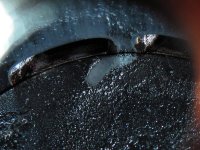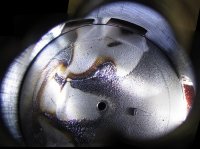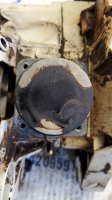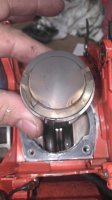Huskihl say, I think most of the charge blows hard to the intake and up just a little, regardless of what the roof does.
The crankcase compression only reaches like 10 psi. If you think about the engine running at 50-250 revolutions per second or
3000-15000 rpm, think about how long the transfers are open for each stroke. If you have an air hose pressurized to 10 psi, and could open the gate for 1/50th of a second, and that is a full stroke of the engine at idle, how much air is coming out of that hose?
The only way these engines can pump efficiently is from the energy produced by the burning mix.
At first the expanding gases push the piston down, then as the exhaust opens and the gases hit the muffler can and expand, it created a pulling effect on the rest of the cylinder, vacuum. And a lot of it. So the transfers want to open just as the pressure is changing to a vacuum for the most efficiency.
After pondering this for a bit I see this as the only way to get enough transfer to run the engine. The crankcase compression combined with a vacuum on the other side means the transfer port sees a much greater differential than just 10 psi to atmosphere.
My question is does the transfers blow or the vacuum suck fuel from the transfers. Or is it a combination that i belive and others too?










